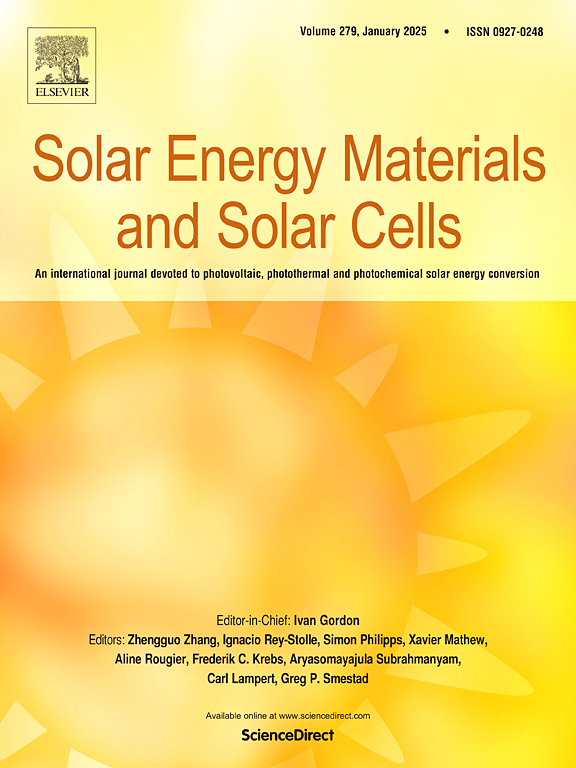Spatial distribution of dopants and oxygen-related defects in antimony-doped Czochralski silicon
IF 6.3
2区 材料科学
Q2 ENERGY & FUELS
引用次数: 0
Abstract
Antimony (Sb)-doped Czochralski (Cz)-grown silicon (Si) wafers would feature superior performances in comparison with the conventional phosphorus (P)-doped wafers and start to be deployed into mass production. However, published studies about the properties of Sb-doped wafers for solar cells are rather scarce. This work investigates the spatial (i.e., axial and radial) distributions of Sb, interstitial oxygen (Oi) and oxygen thermal donors (TD), in Sb-doped Cz ingots processed with melt recharging (RCz), focusing on wafers representative of the whole RCz cycle. This study confirmed first the interest in Sb-doping for obtaining Si ingots and wafers with a controlled and narrowed resistivity range. Furthermore, the studied wafers featured low as-grown TD concentrations, low enough not to affect the bulk carrier lifetime (τb). Results also showed that Sb-doping does not significantly influence the TD formation kinetics. Last, the studied wafers featured relatively low Oi concentrations ([Oi]) below 7 × 1017 cm−3 for most samples, with rather flat [Oi] radial profiles. As these Sb-doped samples also presented low Thermal History Index values, they should not be prone to O-related defects-induced τb degradations during high temperature steps.

掺锑直克拉尔斯基硅中掺杂物的空间分布及氧相关缺陷
锑掺杂(Sb)生长的硅(Si)晶圆与传统的磷掺杂(P)晶圆相比,将具有更优越的性能,并开始大规模生产。然而,关于掺杂锑的太阳能电池晶圆性能的研究却很少。本文研究了Sb、间隙氧(Oi)和氧热供体(TD)在熔体再填充(RCz)处理的掺Sb Cz铸锭中的空间(即轴向和径向)分布,重点研究了整个RCz循环的晶圆。这项研究首次证实了对sb掺杂的兴趣,以获得具有控制和缩小电阻率范围的硅锭和硅片。此外,所研究的晶圆具有低生长的TD浓度,低到足以不影响散体载体寿命(τb)。结果还表明,sb掺杂对TD的形成动力学没有显著影响。最后,所研究的晶圆具有相对较低的Oi浓度([Oi]),大多数样品低于7 × 1017 cm - 3,具有相当平坦的[Oi]径向轮廓。由于这些掺杂sb的样品也呈现出较低的热历史指数值,因此它们在高温步骤中不容易出现o相关缺陷引起的τb退化。
本文章由计算机程序翻译,如有差异,请以英文原文为准。
求助全文
约1分钟内获得全文
求助全文
来源期刊

Solar Energy Materials and Solar Cells
工程技术-材料科学:综合
CiteScore
12.60
自引率
11.60%
发文量
513
审稿时长
47 days
期刊介绍:
Solar Energy Materials & Solar Cells is intended as a vehicle for the dissemination of research results on materials science and technology related to photovoltaic, photothermal and photoelectrochemical solar energy conversion. Materials science is taken in the broadest possible sense and encompasses physics, chemistry, optics, materials fabrication and analysis for all types of materials.
 求助内容:
求助内容: 应助结果提醒方式:
应助结果提醒方式:


